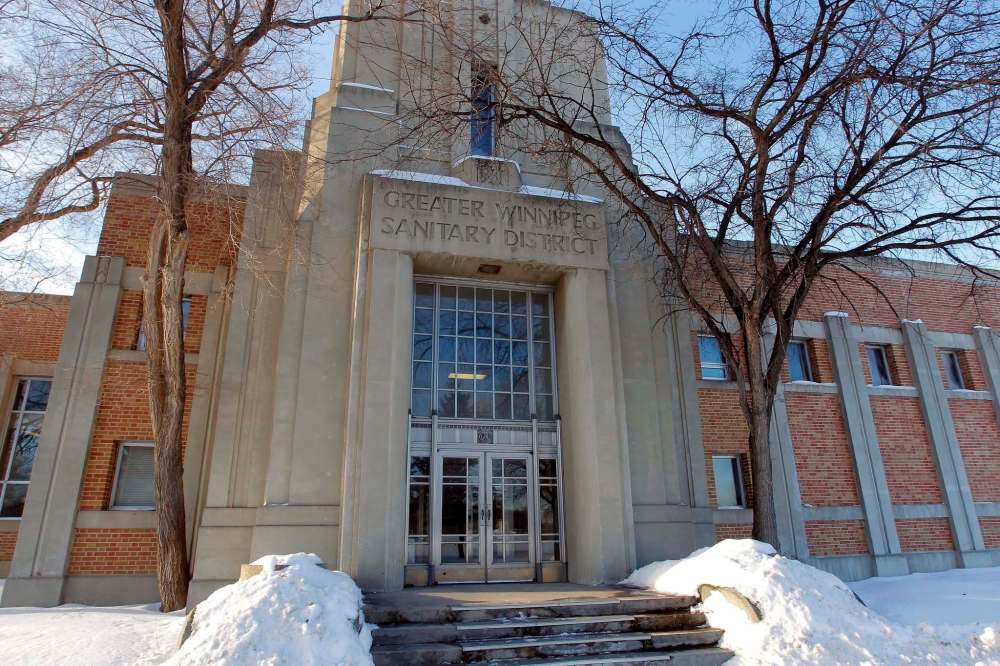Progress made to curb phosphorus
City up against Jan. 31 deadline to cut nutrient discharge from sewage plant
Advertisement
Read this article for free:
or
Already have an account? Log in here »
To continue reading, please subscribe:
Monthly Digital Subscription
$0 for the first 4 weeks*
- Enjoy unlimited reading on winnipegfreepress.com
- Read the E-Edition, our digital replica newspaper
- Access News Break, our award-winning app
- Play interactive puzzles
*No charge for 4 weeks then price increases to the regular rate of $19.00 plus GST every four weeks. Offer available to new and qualified returning subscribers only. Cancel any time.
Monthly Digital Subscription
$4.75/week*
- Enjoy unlimited reading on winnipegfreepress.com
- Read the E-Edition, our digital replica newspaper
- Access News Break, our award-winning app
- Play interactive puzzles
*Billed as $19 plus GST every four weeks. Cancel any time.
To continue reading, please subscribe:
Add Free Press access to your Brandon Sun subscription for only an additional
$1 for the first 4 weeks*
*Your next subscription payment will increase by $1.00 and you will be charged $16.99 plus GST for four weeks. After four weeks, your payment will increase to $23.99 plus GST every four weeks.
Read unlimited articles for free today:
or
Already have an account? Log in here »
Hey there, time traveller!
This article was published 22/01/2020 (2153 days ago), so information in it may no longer be current.
Details of a provincially mandated plan to manage nutrient emissions from the north end sewage treatment plant remain murky, as the deadline for the City of Winnipeg to reduce phosphorus released from the facility closes in.
Dimple Roy, director of water management with the International Institute for Sustainable Development, said a phosphorus-reduction plan ordered by Manitoba Conservation and Climate, due Jan. 31, won’t immediately curtail the amount of nutrients that flow into the river.
“It’s not everything we hoped for, but it’s definitely a step forward from conversations we’ve had in the past,” Roy said. “From our point of view, if this plan includes concrete actions timelines… we will definitely be happy.”

Roy sits on a stakeholder advisory committee struck by the province in early December. The committee is one of two the province ordered the City of Winnipeg to co-chair with Manitoba Conservation and Climate, after it denied its request for an extension to meet phosphorus-emission targets.
The second — a technical steering committee — was tasked with preparing a plan to complete $1.8 billion in upgrades to the plant, and developing an interim phosphorus-reduction plan to be implemented Feb. 1.
“It’s clearly not something that’s going to go into the north end plant and address the phosphorus loads on Feb. 1,” Roy said. “We’re fully aware of the fact that we’re in a process to come up with a plan to do that.”
Roy said the tone of project advisory committee meetings have been positive and optimistic, so far, and there’s a willingness from all parties to get results.
“Typically, this hasn’t been a friendly conversation, and it’s actually a productive conversation to find a way forward,” she said.
The province had required the city to make upgrades at the plant to reduce phosphorus emissions to one mg/litre by the end of 2019. When the city couldn’t reach that target, it fell out of compliance with its environmental licence.
The North End Water Pollution Control Centre is the largest single-point emitter of phosphorus, contributing about five per cent of the total found in Lake Winnipeg. The city has begun work on the first phase of plant upgrades — valued at $408 million — to update the power supply and headworks facilities. Its request to the province and federal government for funding is under review.
Both the city and province declined to answer questions Wednesday about what progress has been made by the steering committee thus far, but said they continue to work collaboratively, and will provide an update on their plans next week.
Last month, city officials said they were concerned the province would direct them to begin a ferric chloride program, which the city had been investigating, at the plant with unknown consequences.
Project advisory committee member and Lake Winnipeg Foundation executive director Alexis Kanu said a plan to reduce phosphorus emissions in the short term is forthcoming, but no solutions will be brought online Feb. 1.
“We’re looking to implement an interim phosphorus-reduction solution at the plant as quickly as possible,” she said. “There’s work being done over the next year to gather the information needed to figure out how to implement this solution at the plant.”
The city recently awarded a contract worth $381,700 to engineering consultant AECOM for a detailed study of chemical phosphorus removal. A final report recommending an interim phosphorus-removal program is expected at the end of 2020. Money has yet to be earmarked for that project.
“We know that full plant upgrades are required, but there are faster ways that we can address the plant’s No. 1 environmental impact,” Kanu said. “As the project advisory committee, we’re looking at that timeline to identify ways to accelerate it.”
danielle.dasilva@freepress.mb.ca

Our newsroom depends on a growing audience of readers to power our journalism. If you are not a paid reader, please consider becoming a subscriber.
Our newsroom depends on its audience of readers to power our journalism. Thank you for your support.
History
Updated on Thursday, January 23, 2020 9:48 AM CST: Corrects typo



